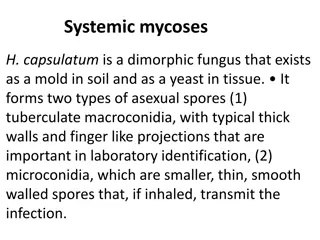Unveiling the Fascinating World of Caves
Delve into the intriguing realm of caves, natural formations in the earth's surface that hold tales of geological wonders. Discover how caves are formed, their diverse types, and their significance in providing shelter for various species. Explore the art of speleology and the captivating formations such as stalactites and stalagmites found within caves. Engage in a simple experiment to understand the geological processes involved in cave formation.
Download Presentation

Please find below an Image/Link to download the presentation.
The content on the website is provided AS IS for your information and personal use only. It may not be sold, licensed, or shared on other websites without obtaining consent from the author.If you encounter any issues during the download, it is possible that the publisher has removed the file from their server.
You are allowed to download the files provided on this website for personal or commercial use, subject to the condition that they are used lawfully. All files are the property of their respective owners.
The content on the website is provided AS IS for your information and personal use only. It may not be sold, licensed, or shared on other websites without obtaining consent from the author.
E N D
Presentation Transcript
About Caves Caves are natural openings within the earth that usually extend deep beyond the reach of light. They are found in many types of rock, but are most common in limestone and gypsum. These caves were formed by water under the surface of the earth. A second type of cave is the lava cave, formed as liquid lava flows. A third type of cave is the sea cave. Sea caves were formed along cliffs and rocky seashores. The study of caves is known as speleology, and those who explore caves are called speleologists.
How are caves formed? Caves are usually made when water runs over soft rock, such as limestone. The acid in the water slowly eats away the limestone, making a hole. The hole gets larger and larger. If the water finds a new path, the cave is left dry. Caves can also be created when hot lava melts rocks, forming holes. Occasionally, the ceiling of a cave collapses, leaving a huge room or cavern. Tidal waters along a coast can also carve out caves.
Facts about caves Dripping water contains lime, or calcium bicarbonate. Over hundreds of years, the lime builds up and hardens, becoming stalactites. Sometimes stalagmites grow up from the floor of a cave. In all cases, these sculptures are caused by mineral deposits that have hardened. Caves provide shelter for many animals, such as bats, insects and hibernating mammals. A cave is also called a cavern. Exploring caves is called caving, potholing, or spelunking.
Lets experiment This experiment helps to explain how caves are formed. You will need: - Clay - Sugar cubes - Newspaper/Clay mats Steps: The clay represent sandstone, a hard rock, and the sugar, limestone. Working on a newspaper-covered surface, mould the clay around the sugar cubes, being careful to leave at least part of a sugar cube exposed. The shape of your sugar cubes, will be the shape of your cave. When you have finished constructing the cave, leave it to dry for several days. Then soak the structures in water. The sugar will dissolve, leaving the hollowed out spaces.























